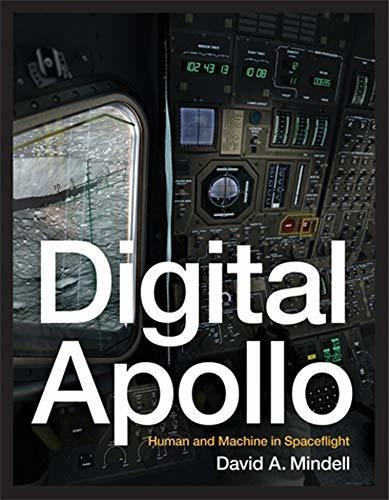Book : Digital Apollo Human And Machine In Spaceflight (the
Disponible 15 días después de tu compra
MercadoLíder | +10mil ventas
MercadoLíder Platinum
+10mil
Ventas concretadas
Brinda buena atención
Medios de pago
Hasta 12 cuotas sin tarjeta
Tarjetas de crédito
Tarjetas de débito
Efectivo


Descripción
- ANTES DE COMPRAR PREGUNTE FECHA DE ENTREGA.
- ENVIAMOS POR MERCADOENVIOS
- PUEDE RETIRAR POR AHORA SOLO POR QUILMES, MICROCENTRO ESTA CERRADO, POR ESO...
- EN CABA (CAPITAL FEDERAL) ENVIAMOS SIN CARGO ESTE PRODUCTO.
- FORMA DE PAGO : MERCADOPAGO
- HACEMOS FACTURA A.
- ELBAZARDIGITAL VENDEDOR PLATINUM
- TODOS NUESTROS PRODUCTOS EN:
https://eshops.mercadolibre.com.ar/elbazardigital
-X-X-X-
- SOMOS IMPORTADORES DIRECTOS, ESTE PRODUCTO SE COMPRA Y SE IMPORTA DESDE ESTADOS UNIDOS, ESTO IMPLICA QUE USTED ESTA COMPRANDO EL MISMO PRODUCTO QUE COMPRARÍA UN CLIENTE DE ESE PAÍS.
- ANTES DE REALIZAR UNA CONSULTA, VISUALICE TODAS LAS IMAGENES DEL PRODUCTO.
Descripción provista por la editorial :
How human pilots and automated systems worked together to achieve the ultimate in flight-the lunar landings of NASA’s Apollo program As Apollo 11’s Lunar Module descended toward the moon under automatic control, a program alarm in the guidance computer’s software nearly caused a mission abort. Neil Armstrong responded by switching off the automatic mode and taking direct control. He stopped monitoring the computer and began flying the spacecraft, relying on skill to land it and earning praise for a triumph of human over machine. InDigital Apollo, engineer-historian David Mindell takes this famous moment as a starting point for an exploration of the relationship between humans and computers in the Apollo program. In each of the six Apollo landings, the astronaut in command seized control from the computer and landed with his hand on the stick. Mindell recounts the story of astronauts’ desire to control their spacecraft in parallel with the history of the Apollo Guidance Computer. From the early days of aviation through the birth of spaceflight, test pilots and astronauts sought to be more than “spam in a can” despite the automatic controls, digital computers, and software developed by engineers. Digital Apollo examines the design and execution of each of the six Apollo moon landings, drawing on transcripts and data telemetry from the flights, astronaut interviews, and NASA’s extensive archives. Mindell’s exploration of how human pilots and automated systems worked together to achieve the ultimate in flight-a lunar landing-traces and reframes the debate over the future of humans and automation in space. The results have implications for any venture in which human roles seem threatened by automated systems, whether it is the work at our desktops or the future of exploration Review [A] wealth of research that even the most informed space fans can enjoy. Mindell avoids the temptation to glorify the space program, instead dealing with the nitty gritty logistics involved in getting a man to the moon.Digital Apollo succeeds in providing an inside track to one of the most difficult technological challenges of the 20th century.-James Thorne,coolhunting -Mindell joyfully plumbs the deep history of Apollos decade-long clash between the MIT eggheads who built the computers and the thrill-jockey military test pilots who used them.-IEEE Spectrum-The book is a refreshing reminder that it is still possible to uncover new stories about the early years of the American space program.-Dwayne A. Day,Air & Space- Review Digital Apollo takes the reader on a wild ride following the impact of the increasingly complex world of data processing, control, and display on space flight. The book traces the evolution of mans role aboard high speed aircraft, the hybrid X-15, and ultimately space flight, and the lunar landing. This book is fascinating history and an important resource for future space explorers. Robert C. Seamans, Jr., Former Deputy Administrator, NASA About the Author David A. Mindell is Dibner Professor of the History of Engineering and Manufacturing, Professor of Engineering Systems, and Director of the Program in Science, Technology, and Society at MIT. He is the author ofBetween Human and Machine: Feedback, Control, and Computing before Cybernetics andWar, Technology, and Experience aboard the USS Monitor.
-o-o-o-
Garantía del vendedor: 90 días
Preguntas y respuestas
¿Qué querés saber?
Preguntale al vendedor
Nadie hizo preguntas todavía. ¡Hacé la primera!

